ADDICTION
ALCOHOL DEPENDENCE
QUIT SMOKING
ALLERGY
ANTI FUNGAL
FUNGAL INFECTION
FUNGAL NAIL INFECTIONS
ANTI-REJECTION DRUGS
ANTI WORM
ANTIBIOTIC
BACTERIAL INFECTIONS
ARTHRITIS
GOUT
OSTEOARTHRITIS
RHEUMATOID ARTHRITIS
BLOOD
LOW PLATELET COUNT
THROMBOPHLEBITIS
VARICOSE VEINS
COLON
ANAL FISSURE
PILES
ULCERATIVE COLITIS
DIABETES CARE
DIABETES INSIPIDUS
DIABETES TYPE
DIABETIC FOOT ULCERS
GLUCOSE MONITOR
EYES/EAR CARE
DRY EYES
EYE CARE
EYE EXAMINATION
EYE INFECTION
EYE LASHES
EYE PAIN
GLAUCOMA
OCULAR HYPERTENSION
UVEITIS
FEVER CARE
MALARIA
RHEUMATIC FEVER
TYPHOID FEVER
GASTROINTESTINAL
ACIDITY
CONSTIPATION
CROHN'S DISEASE
DIARRHOEA
GALLBLADDER STONES
INTESTINAL ULCERS
IRRITABLE BOWEL SYNDROME
MOTION SICKNESS
NAUSEA
Thalix 50 mg (Thalidomide)
| Active Ingredient (Generic Name): | Thalidomide |
|---|---|
| Indication: | Multiple myeloma, Lepra reaction |
| Manufacturer: | Fresenius Kabi India Pvt.Ltd. |
| Packaging: | 10 capsules in one strip |
| Strength: | 50 mg |
From: $124.00
You are currently prescribed Thalix 50 mg, a form of thalidomide, a medication with a complex history and various medical applications. Originally developed in 1954, thalidomide was withdrawn from the market in 1961 due to its association with severe birth defects. Nowadays, it is primarily used to treat conditions such as multiple myeloma and erythema nodosum leprosum. To ensure its effectiveness, it is crucial to adhere strictly to the dosing instructions, taking the capsule whole with water at bedtime and avoiding grapefruit juice. It is essential to be vigilant about potential side effects, drug interactions, and contraindications while staying informed about its mechanism of action and monitoring requirements for patients. By delving deeper into your treatment regimen, you will gain a better understanding of its effects and the importance of careful management.
Main Points
Thalix 50 mg, containing thalidomide, is prescribed for multiple myeloma, erythema nodosum leprosum, and other medical conditions. It functions by inhibiting angiogenesis, modulating the tumor microenvironment, and altering the immune system towards anti-tumor responses. Thalidomide is not safe during pregnancy and breastfeeding due to its teratogenic effects, necessitating reliable contraception while undergoing treatment. Common adverse effects of Thalix 50 mg include peripheral neuropathy, somnolence, constipation, fatigue, and rash, with severe reactions being uncommon. Patients on Thalix 50 mg treatment need regular monitoring, and open communication with healthcare providers is crucial for managing side effects and the course of treatment.
Thalidomide History and Development
In the 1950s, thalidomide, a sedative first synthesized by German chemist Wilhelm Kunze in 1954, was found to be marketed as a treatment for insomnia, anxiety, and morning sickness in pregnant women. Despite its initial popularity and widespread use, reports of severe birth defects and miscarriages linked to thalidomide emerged. The drug was withdrawn from the market in 1961 after causing an estimated 10,000 to 20,000 birth defects globally. Thalidomide’s harmful effects were attributed to its ability to cross the placenta and disrupt fetal development. Following the thalidomide tragedy, stricter regulations were implemented to enhance drug safety standards. Despite its past, thalidomide has resurfaced as a treatment for specific types of cancer and leprosy in recent years.
Mechanism of Action Explained
When exploring Thalix 50 mg (Thalidomide), it is important to understand its mechanism of action. Thalidomide works through various pathways, including its anti-angiogenic effects, immunomodulatory properties, and inhibition of TNF-alpha production. Understanding these mechanisms provides insights into the drug’s therapeutic benefits.
Thalidomide’s Anti-Angiogenic Effect
Thalidomide’s anti-angiogenic property arises from its ability to inhibit the production of vascular endothelial growth factor (VEGF), a key protein that promotes the formation of new blood vessels. By taking Thalix 50 mg, you enable thalidomide to suppress VEGF production, thereby halting the creation of new blood vessels necessary for tumor growth. This anti-angiogenic effect is crucial in impeding tumor progression and metastasis. Thalidomide’s modulation of the tumor microenvironment disrupts angiogenesis, hampering the tumor’s survival and spread, particularly beneficial in treating cancers reliant on angiogenesis like multiple myeloma. The combination of thalidomide’s anti-angiogenic action and immunomodulatory function plays a significant role in combating cancer effectively.
Thalidomide’s Immunomodulatory Role
Thalidomide’s ability to suppress pro-inflammatory cytokine production plays a key role in modulating the immune system, shifting it towards an environment more conducive to anti-tumor responses. This immunomodulatory function is critical for understanding how thalidomide works. By reducing pro-inflammatory cytokine levels, immune cell activation that supports tumor growth is inhibited.
Conversely, thalidomide boosts the production of anti-inflammatory cytokines, enhancing the activity of immune cells that fight tumors. The delicate balance between pro- and anti-inflammatory cytokines is vital for determining the immune response. Additionally, there is an increase in interleukin-2 (IL-2) production, a cytokine that activates natural killer cells and cytotoxic T-cells, essential for eliminating tumor cells. Thalidomide’s immunomodulatory role not only hinders tumor growth but also improves the immune system’s ability to detect and eradicate cancer cells. The examination of thalidomide’s mechanism highlights the crucial role of its immunomodulatory properties in its anti-tumor effects.
Inhibiting TNF-Alpha Production
Thalidomide functions by inhibiting the production of tumor necrosis factor-alpha (TNF-alpha), a cytokine that promotes inflammation. This inhibition helps reduce inflammation, which is beneficial for conditions like cancer and autoimmune disorders. Thalidomide’s mechanism involves suppressing TNF-alpha production to create a more favorable environment for healing. TNF-alpha is a pro-inflammatory cytokine, and by inhibiting its production, thalidomide helps to mitigate the inflammatory response.
Uses and Indications for Thalix
Thalix 50 mg, containing thalidomide, is indicated for multiple myeloma, erythema nodosum leprosum, aphthous ulcers, and graft-versus-host disease. It is prescribed to manage multiple myeloma, a bone marrow cancer, and erythema nodosum leprosum, a skin condition linked to leprosy. Thalix 50 mg is also used to lower mortality risk in multiple myeloma patients, often in combination with dexamethasone. It effectively reduces symptoms like anemia, bone lesions, and hypercalcemia associated with multiple myeloma. Your doctor may include Thalix 50 mg in your treatment plan to address these conditions.
Contraindications and Warnings
When considering Thalix 50 Mg (Thalidomide), it is important to be mindful of the contraindications and warnings. Caution is advised when prescribing Thalix to pregnant or lactating patients, as well as those with severe neutropenia or at risk of increased mortality. These considerations are crucial for the safe and effective use of Thalix in patients.
Pregnancy and Lactation
Thalix 50 Mg (thalidomide) is classified as pregnancy category X and lactation category 4 medication due to the high risk of severe birth defects and fetal death if used during pregnancy. It is crucial to avoid pregnancy while taking this medication and for at least four weeks after discontinuing treatment. Women of childbearing potential must use two reliable forms of contraception, including a barrier method, for one month before, during, and one month after thalidomide therapy. A negative pregnancy test is required within three days before starting treatment.
Thalidomide is excreted in breast milk, and breastfeeding should be avoided while taking this medication. If you are lactating, you should either stop breastfeeding or discontinue the drug, considering the importance of the medication to you. Your healthcare provider will assess the potential benefits of treatment against the risks to your baby.
Severe Neutropenia Risk
Do not take Thalix 50 Mg if you have severe neutropenia, as it can further reduce your neutrophil count, increasing the risk of infections. Neutropenia is characterized by a low count of neutrophils, white blood cells that play a role in fighting infections. Taking Thalix 50 Mg in such a condition can compromise your immune system, making you more vulnerable to severe infections.
If you have a history of neutropenia or are experiencing symptoms like fever, chills, or frequent infections, inform your doctor promptly. They may suggest alternative treatments or adjust your dosage to prevent exacerbating neutropenia. Regular monitoring of your neutrophil count during treatment is essential to ensure your safety while using Thalix 50 Mg.
Increased Mortality Rate
Thalix 50 Mg is not recommended for patients at risk of increased mortality, particularly in the elderly or those with a history of cardiovascular disease. Prior to initiating Thalix 50 Mg treatment, it is crucial to carefully evaluate the potential risks versus benefits, especially for individuals in these high-risk groups.
Consider the following factors that may contribute to a higher mortality rate:
- Cardiovascular events: Thalix 50 Mg could elevate the likelihood of cardiovascular events like heart attacks, strokes, and blood clots, which may result in fatalities.
- Elderly patients: Older individuals may face a greater vulnerability to the negative effects of Thalix 50 Mg, potentially increasing mortality rates.
- Pre-existing cardiovascular disease: Individuals with a previous history of cardiovascular issues may experience an elevated risk of mortality when using Thalix 50 Mg.
- Combination therapy: Concurrent use of Thalix 50 Mg with other medications or treatments may further raise the mortality rate.
It is advisable to have a detailed discussion with your healthcare provider regarding your medical background and any apprehensions before starting Thalix 50 Mg to ensure a safe and effective treatment plan.
Thalidomide Side Effects Profile
Thalidomide’s side effects can present a variety of adverse reactions, with around 20% of patients experiencing peripheral neuropathy, a nerve damage condition leading to numbness, tingling, or pain in the hands and feet. Somnolence may also occur, causing dizziness, confusion, and difficulty concentrating. Other common side effects include constipation, fatigue, and rash. Some individuals may exhibit neuropsychiatric symptoms like anxiety, depression, and mood swings. In rare instances, severe reactions such as Stevens-Johnson syndrome, a life-threatening skin condition, and blood clots like deep vein thrombosis and pulmonary embolism may occur. It is important to weigh the benefits of thalidomide against these potential risks and consult your healthcare provider with any concerns. Side effects can vary in severity and frequency among individuals, so monitoring and promptly reporting any unusual symptoms to your doctor is crucial.
Dosage and Administration Guide
When starting Thalix 50 mg treatment, adhere closely to the prescribed dosage and administration instructions to minimize adverse reactions and optimize therapeutic effects.
Your doctor will determine the appropriate dosage based on your medical history. Take Thalix 50 mg exactly as directed without exceeding the recommended dose.
Follow these administration guidelines:
- Swallow the capsule whole with a full glass of water to prevent capsule breakage and skin exposure.
- Take Thalix 50 mg at bedtime to reduce drowsiness and sedative effects.
- Avoid consuming grapefruit juice as it can elevate thalidomide levels in the blood, increasing the risk of adverse reactions.
- Women of childbearing potential must use effective contraception during Thalix 50 mg treatment due to its teratogenic effects.
Adhere strictly to your doctor’s instructions and promptly report any unusual symptoms or side effects.
Interactions With Other Medications
When combining Thalix 50 mg with other medications, it’s important to be aware of potential drug interactions that can affect its effectiveness and safety. Inform your doctor about all current prescription and over-the-counter drugs, vitamins, and supplements. Thalidomide may increase the risk of bleeding when taken with anticoagulants like warfarin or antiplatelet agents such as aspirin. Combining Thalix 50 mg with sedatives, tranquilizers, or antidepressants can intensify their effects, potentially causing increased sedation or respiratory depression.
If you take Thalix 50 mg with medications metabolized by the CYP2B6 enzyme, like bupropion or efavirenz, their plasma levels may decrease. Conversely, Thalix 50 mg levels may rise when combined with strong CYP2B6 inhibitors like ritonavir. It’s crucial to monitor your response to treatment closely and promptly report any unusual symptoms to your doctor. Being mindful of these potential interactions can help reduce the risk of adverse events and maximize the benefits of Thalix 50 mg therapy.
Pregnancy and Breastfeeding Risks
Extreme caution must be exercised when taking Thalix 50 mg during pregnancy or when planning to conceive, as the drug is known to result in severe birth defects and life-threatening complications for unborn babies. Understanding the risks associated with Thalix 50 mg during pregnancy and breastfeeding is crucial.
Key considerations include:
- Thalidomide, the active ingredient in Thalix 50 mg, is a teratogen that can cause significant birth defects like limb deformities, heart issues, and other congenital abnormalities.
- Unborn babies exposed to Thalix 50 mg are at risk of life-threatening complications, including stillbirth, miscarriage, and premature birth.
- Breastfeeding while taking Thalix 50 mg is not recommended due to the potential harm the drug can pose to the infant through breast milk.
- Effective contraception should be used when taking Thalix 50 mg to prevent pregnancy, as the drug can harm an unborn baby even at conception.
Patient Monitoring and Support
Regular monitoring of your health is crucial when taking Thalix 50 mg. Your healthcare provider will assess your response to the medication and watch for potential side effects. Thalidomide can lead to severe birth defects, so preventing unplanned pregnancies during treatment is essential. Your provider will also monitor your blood counts, liver enzymes, and other lab results to ensure the medication is not causing harm.
Scheduled appointments with your provider are necessary to track your progress, address any side effects, and adjust your dosage as required. Honest communication about your symptoms is vital for informed decision-making about your treatment. Regular blood tests may be needed to monitor blood cell counts and liver function. Through careful health monitoring, you and your provider can collaborate to minimize risks associated with Thalix 50 mg and provide optimal care.
Frequently Asked Questions
Can Thalix 50 Mg Be Crushed or Split for Easier Consumption?
Before altering your medication for easier consumption, it’s essential to seek advice from your healthcare provider. Modifying the form of Thalix 50 mg by crushing or splitting it can potentially impact the drug’s absorption, efficacy, and safety. While there are instances where this may be appropriate, personalized guidance is necessary to prevent any possible complications.
Is Thalidomide Available in Generic or Alternative Brand Forms?
Looking for alternatives to Thalix 50 Mg? Thalidomide is available in generic and alternative brand forms. In the US, Celgene’s Thalomid is a known brand, with generic versions from manufacturers like Mylan and Sun Pharma. Internationally, options include Thalix, Thalodom, and Imnovid. Consult your doctor before switching to ensure a smooth transition.
Can I Take Thalix 50 Mg With Food or on an Empty Stomach?
When taking Thalix 50 mg, it can be taken with or without food. However, it is advisable to avoid high-fat meals when taking the medication as it may affect its absorption. Opt for a low-fat meal or snack instead. Consistent intake, whether with or without food, helps maintain a steady level of the medication in your system.
How Long Does It Take to Notice Improvements With Thalix Treatment?
You may be curious about the timeline for noticing improvements with your Thalix treatment. Typically, individuals begin experiencing benefits within 2-4 weeks, with full effects potentially taking up to 12 weeks to manifest. Various factors such as dosage, personal response, and the specific condition being treated can impact how quickly improvements are observed. It’s important to maintain patience and regularly consult with your healthcare provider to track progress and make any necessary adjustments to your treatment plan.
Is It Safe to Consume Alcohol While Taking Thalix 50 Mg?
When taking prescription medications like Thalix 50 mg, it is advisable to avoid or limit alcohol consumption. Alcohol can potentially interfere with the effectiveness of the medication or increase the chances of experiencing negative side effects. To ensure your safety and the efficacy of your treatment, it is best to consult with your healthcare provider or pharmacist for personalized advice on drinking alcohol while using Thalix 50 mg.
Conclusion
You are now acquainted with Thalix 50 mg, a crucial drug used to treat multiple myeloma and erythema nodosum leprosum. Understanding its background, mode of action, and approved uses will help you navigate its benefits and risks effectively. Remember to diligently monitor your dosage, be vigilant for potential side effects, and adhere to your treatment regimen to optimize the therapeutic effects of Thalix 50 mg while minimizing any adverse reactions.


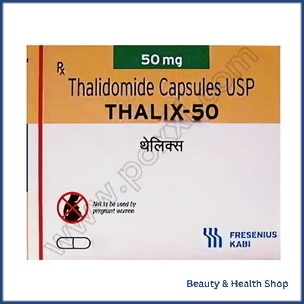
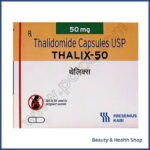
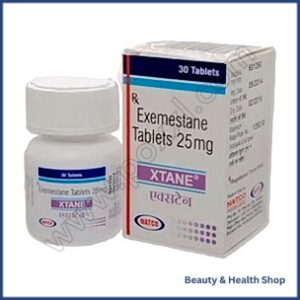

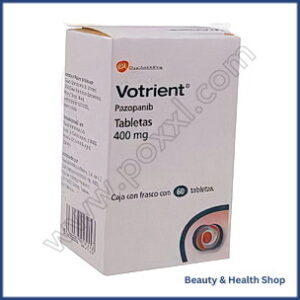
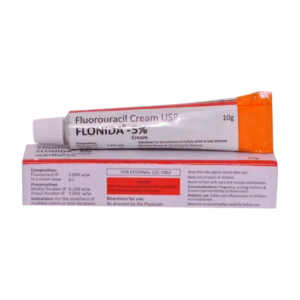
There are no reviews yet.